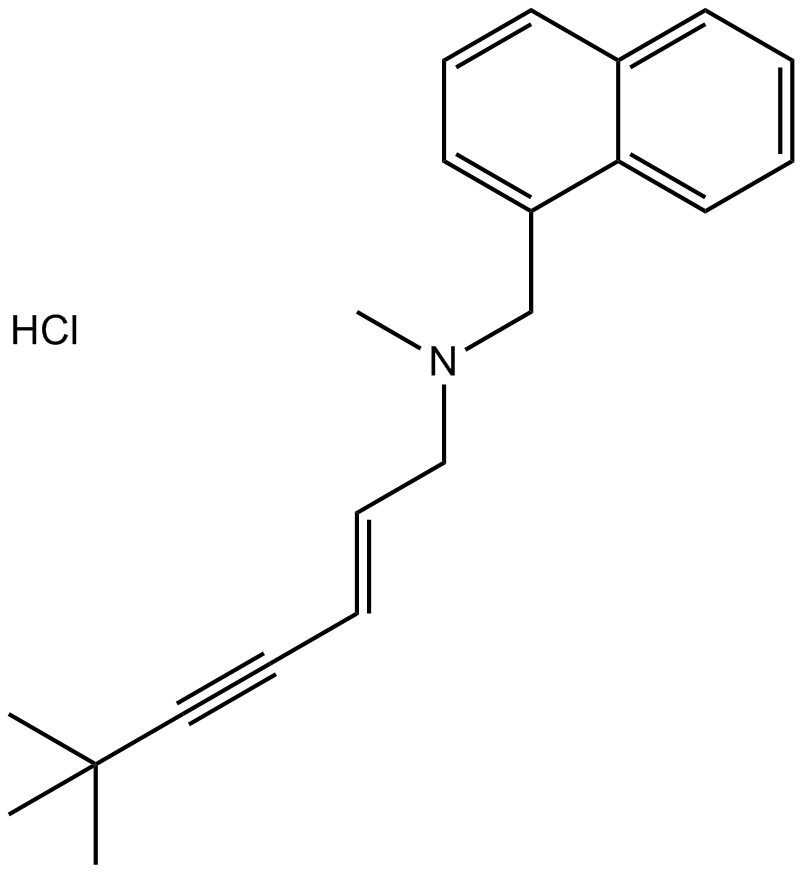Terbinafine HCl |
| Catalog No.GC14576 |
Terbinafine HCl(TDT 067 염산염)은 경구 활성이며 강력한 항진균제입니다.
Products are for research use only. Not for human use. We do not sell to patients.

Cas No.: 78628-80-5
Sample solution is provided at 25 µL, 10mM.
Terbinafine hydrochloride (TDT 067 hydrochloride) is an antifungal medication used to treat fungal infections. It is a potent non-competitive inhibitor of squalene epoxidase from Candida with a Ki of 30 nM.
Terbinafine has a primary fungicidal action in vitro against most fungal pathogens, including dermatophytes, and dimorphic and filamentous fungi. Terbinafine specifically inhibits fungal ergosterol biosynthesis at the point of squalene epoxidation. The treated fungal cells rapidly accumulate tlic intermediate squalene and become deficient in the end-product of the pathway, ergosterol[1].
Terbinafine is not only active after topical application but is very effective in experimental dermatophytoses following oral administration. In fungi infected guinea-pigs, the skin temperature dropps dramatically after the fourth treatment of terbinafine[2].
References:
[1]. Ryder NS, et al. Terbinafine: mode of action and properties of the squalene epoxidase inhibition. Br J Dermatol. 1992 Feb;126 Suppl 39:2-8.
[2]. Mieth H, et al. Preclinical evaluation of terbinafine in vivo. Clin Exp Dermatol. 1989 Mar;14(2):104-8.
Average Rating: 5 (Based on Reviews and 15 reference(s) in Google Scholar.)
GLPBIO products are for RESEARCH USE ONLY. Please make sure your review or question is research based.
Required fields are marked with *




















